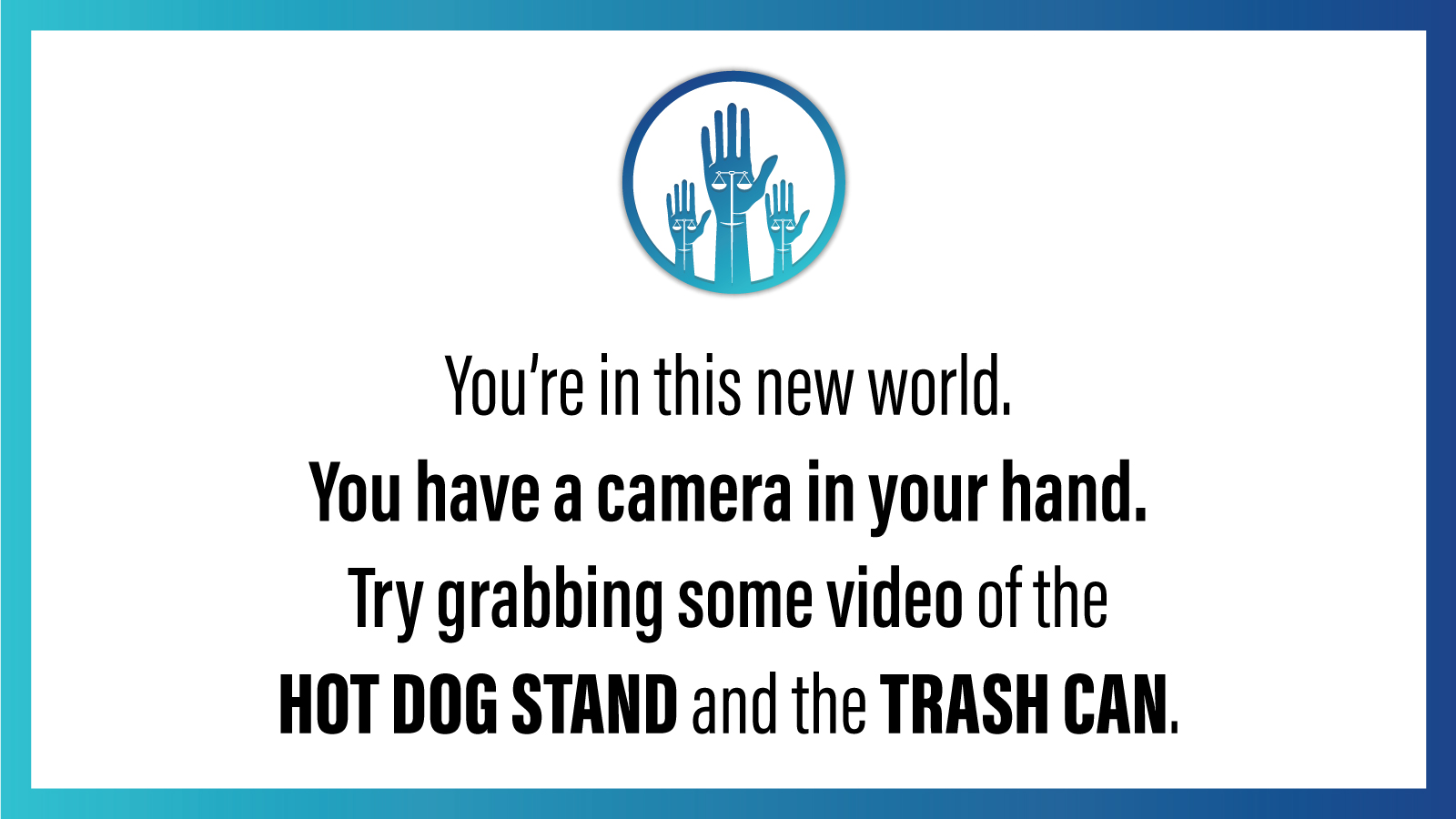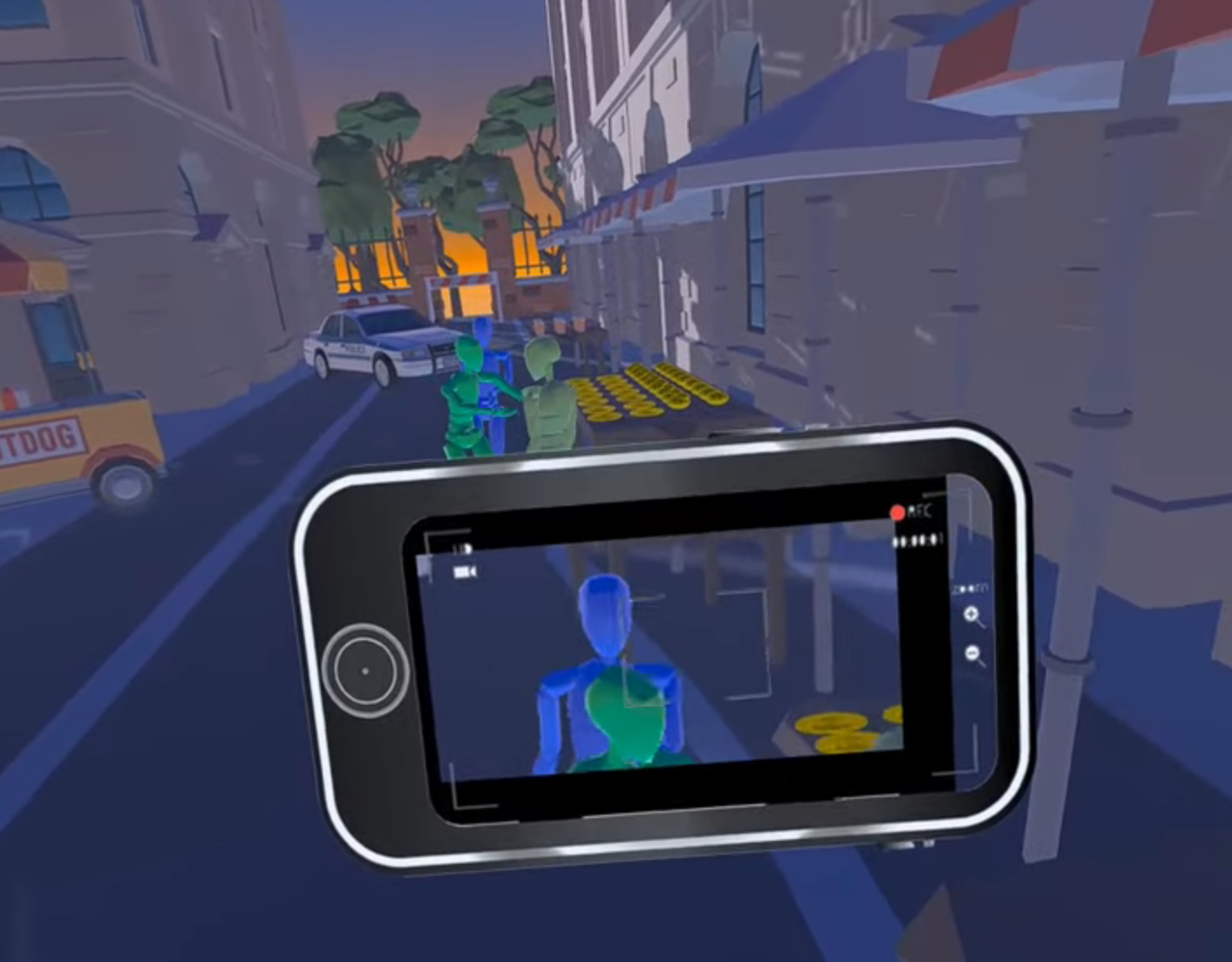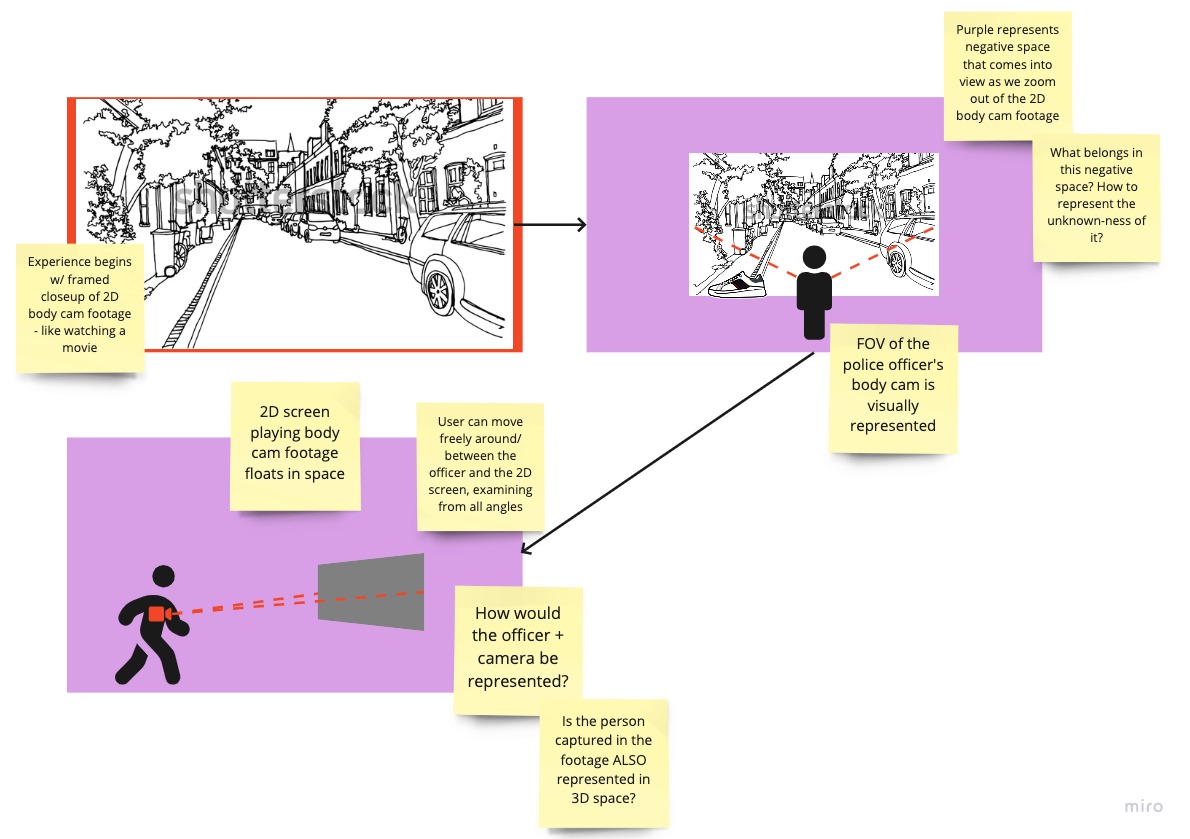Roles: VR and 3D Developer, Level Design, Environment Design | Team Size: 6
Elevator Pitch: Challenge your perception of reality and spark discussions about justice in VR The Jury, where you document a possible crime while non-immersed players act as a jury and make individual verdicts.
Summary of Core Gameplay: Players document a crime scene using a virtual camera-phone while non-immersed players act as a jury and make individual verdicts. The game prompts discussion about the limitations of human perception and the implications for justice.
Gameplay Scene
Gameplay and Level Design
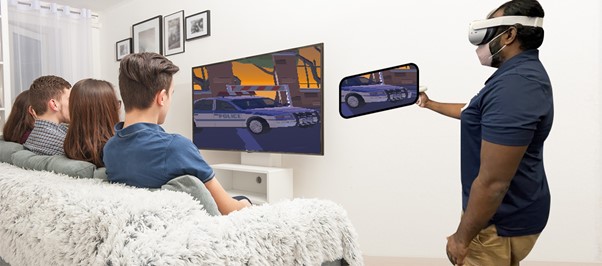 VR the Jury is a narrative-driven puzzle game that aims to bring immersive VR gameplay to a wider audience by allowing a non-VR player to join in the experience. The game is set in a courtroom and the player assumes the role of a juror who must investigate the case by solving puzzles, gathering evidence, and presenting their findings in court.
The game consists of two modes: VR and PC. In VR mode, the player explores the crime scenes, interacts with objects and NPCs, and solves puzzles using hand movements and VR controllers. In PC mode, the player assists the VR player by examining documents, analyzing evidence, and providing advice through a dedicated interface.
The level design is based on a linear narrative structure, with each level representing a day in the trial. The puzzles in each level are designed to be progressively challenging, with clues and evidence becoming more complex as the trial progresses. The cooperative gameplay mechanics are designed to create a sense of interdependence between the VR and PC players, encouraging collaboration and communication throughout the game.
VR the Jury is a narrative-driven puzzle game that aims to bring immersive VR gameplay to a wider audience by allowing a non-VR player to join in the experience. The game is set in a courtroom and the player assumes the role of a juror who must investigate the case by solving puzzles, gathering evidence, and presenting their findings in court.
The game consists of two modes: VR and PC. In VR mode, the player explores the crime scenes, interacts with objects and NPCs, and solves puzzles using hand movements and VR controllers. In PC mode, the player assists the VR player by examining documents, analyzing evidence, and providing advice through a dedicated interface.
The level design is based on a linear narrative structure, with each level representing a day in the trial. The puzzles in each level are designed to be progressively challenging, with clues and evidence becoming more complex as the trial progresses. The cooperative gameplay mechanics are designed to create a sense of interdependence between the VR and PC players, encouraging collaboration and communication throughout the game.
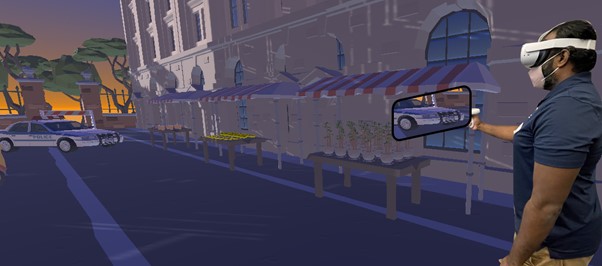 In the second level, asymmetric mechanics of shooting for the VR player and shield for the PC player are introduced. Similar to level one, players first have time to practice the mechanics at their own pace and then play together in cooperative challenges.
The game aims to encourage cooperation between the two players by designing challenges based on cooperative dynamics that create meaningful cooperation presented by Ptrick Redding in his GDC talk with the same topic. The PC player, a treasure hunter, is searching for treasure in ancient hidden cities while he/she meets the VR player, a time traveler. The two players have different skills to learn from each other, with the VR player having technology and futuristic knowledge, and the PC player having mythical knowledge of the ancient world. The two players have a mutual give-and-take relation and balanced abilities as the game progresses.
In the second level, asymmetric mechanics of shooting for the VR player and shield for the PC player are introduced. Similar to level one, players first have time to practice the mechanics at their own pace and then play together in cooperative challenges.
The game aims to encourage cooperation between the two players by designing challenges based on cooperative dynamics that create meaningful cooperation presented by Ptrick Redding in his GDC talk with the same topic. The PC player, a treasure hunter, is searching for treasure in ancient hidden cities while he/she meets the VR player, a time traveler. The two players have different skills to learn from each other, with the VR player having technology and futuristic knowledge, and the PC player having mythical knowledge of the ancient world. The two players have a mutual give-and-take relation and balanced abilities as the game progresses.
Project Goal:
The goal of VR The Jury is to create an immersive and engaging VR puzzle game that provides a unique cooperative gameplay experience for both VR and non-VR players.
The game is designed to be accessible to a wide range of players, with intuitive controls, an engaging narrative, and challenging puzzles that require both critical thinking and collaboration.
My Roles and Responsibilities:
- Collaborating with the team to conceptualize and design the game mechanics, narrative, and level design
- Developing and implementing game mechanics and features using Unity and C#
- Balancing gameplay mechanics and adjusting difficulty levels based on user testing feedback
- Creating and implementing puzzles, interactions, and NPC behaviors
- Collaborating with artists and sound designers to create a cohesive and immersive game experience
Tools and Technologies:
- Game Engine: Unity
- Programming Languages: C#, Python
- VR Hardware: Oculus Quest 2/Pro, HTC Vive
- PC Hardware: Windows PC
- Design Tools: Adobe Creative Cloud, Blender, Davinci
- Project Management: Trello, Miro, GitHub
Challenges and Solutions:
- One of the main challenges in developing VR the Jury was creating a cooperative gameplay experience that was both engaging and accessible for both VR and non-VR players. To address this, we conducted extensive user testing and made adjustments to the level design and gameplay mechanics based on feedback.
- Another challenge was creating a convincing and immersive courtroom environment. To address this, we collaborated with a legal expert to ensure accuracy in the trial procedures and terminology, and used sound design and animation to create a sense of presence and immersion in the courtroom.
- Finally, balancing gameplay mechanics and difficulty levels was a constant challenge throughout development. We addressed this by conducting frequent playtesting sessions and adjusting gameplay mechanics and puzzles based on user feedback.
Links, Credits and More:
Overall, VR the Jury is a challenging and engaging game that leverages VR technology to create an immersive and dynamic experience for players. Its unique gameplay mechanics and level design make it a standout title in the VR gaming space.
